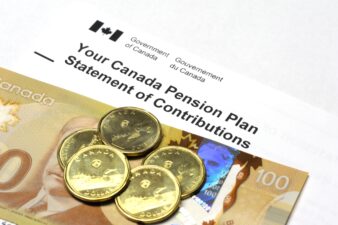Enbridge (TSX: ENB)(NYSE: ENB), Canada’s largest midstream company, may not be the most exciting player in the patch. However, it is a crucial provider of transportation and storage services for other companies, allowing them to access vital refining markets in the U.S. It transports 53% of all U.S.-bound Canadian crude, giving it a virtual monopoly over transporting Canadian crude from the patch to Canada’s key export market.
Why does Enbridge’s dividend continue to grow?
Enbridge’s revenue, cash flow, and profits have grown steadily over the last two decades as oil production in the patch and global demand for crude have exploded. For the last five years, operational cash flow alone, a key measure of financial health, has grown 65%, or at a compound rate of 11% annually.
Enbridge’s dividend yield of 2.7% may not be enough to grab the attention of income-hungry investors, with a number of players in the patch offering yields in excess of 5%. However, with its overall financial performance buoyed by consistently growing revenue and cash flow, Enbridge has boosted its annual dividend every year for the last 19 years, giving it a compound annual growth rate of 9%. This annual growth rate is also well in excess of Canada’s annual average inflation rate of 2% for the same period.
What does the future hold?
Given Enbridge’s dominant position in transporting crude, stronger industry fundamentals, and growing crude production in the patch, I expect to see its cash flow, and therefore its dividend, continue to grow. The company also continues to push ahead with maintaining its dominant position in the transportation and storage of Canadian crude.
It has taken a number of measures that will allow it to transport and market Canadian crude to other increasingly lucrative refining markets besides the U.S., such as China and other emerging Asian markets. This will reduce its dependence on the U.S. as a key export market, which is fast approaching energy self-sufficiency as production continues to grow exponentially because of the shale oil boom.
Enbridge is the first player in the patch to obtain a license from U.S. authorities to re-export Canadian crude from the U.S., and recently received conditional approval for the construction of the Northern Gateway pipeline, which will transport crude from the patch to Canada’s west coast for export to Pacific Rim markets.
All of these positive developments have come at a time when key rival TransCanada (TSX: TRP)(NYSE: TRP) finds its Keystone pipeline connecting the patch to U.S. refineries mired in political controversy. They also give Enbridge an edge over the more domestically focused Pembina Pipeline Corporation (TSX: PPL)(NYSE: PBA) when it comes to accessing offshore refining markets. These markets are core consumers of Canadian crude, with over 76% of all Canadian crude produced destined for export, making them a key means of generating earnings.
These factors will help Enbridge to continue growing revenue, cash flow, and net income, allowing the company to continue growing its dividend for the foreseeable future. This makes Enbridge a top-tier dividend stock, with a solid moat and extraordinary growth prospects for income-hungry investors who can continue to stomach the regulatory risk and controversy surrounding Canada’s crude industry.







